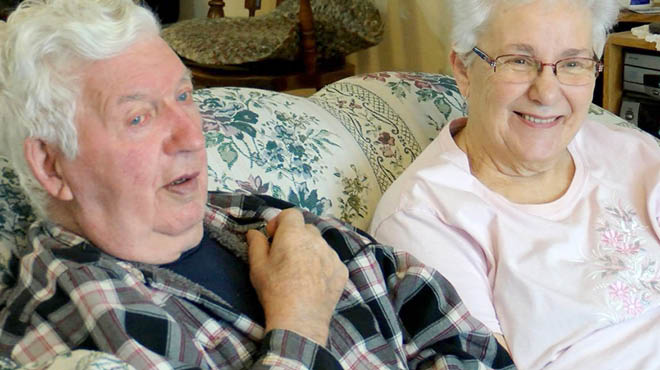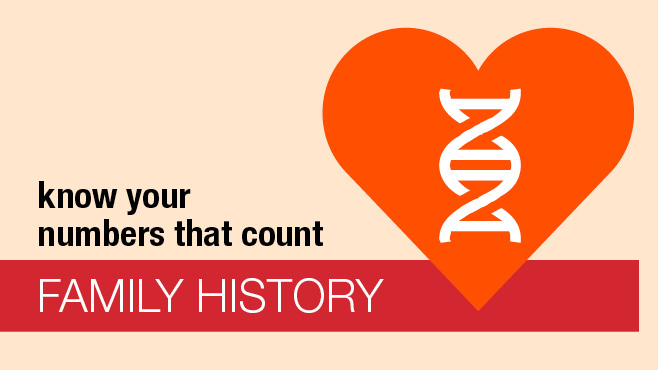Recent Posts
-

-
 Patient StoriesFrom davenport to dance floor: New life for patient with heart conditionJanuary 19, 2023
Patient StoriesFrom davenport to dance floor: New life for patient with heart conditionJanuary 19, 2023
Youth athletes shouldn't skip a beat when it comes to heart health

As the seasons change, so do the sports seasons. Youth athletes transition sports gear like cleats, nets, basketball shoes, hockey sticks, and singlets. From outdoor training to indoor activities, sports conditioning requires stamina and endurance from the body's cardiovascular system.
Sports activity and its effects on the body
Intense training and exercise increase the body's need for oxygen. The heart is vital as the engine that supplies oxygen-rich blood to the muscles. With regular, vigorous aerobic activity, an athlete's heart begins to change over time, growing larger and stronger with increased capacity.
Physical activity, especially mild to moderate exercise, is beneficial in many ways. It reduces the risk of chronic disease, improves balance and coordination, helps you lose weight, and even boosts self-esteem. Highly strenuous physical activities, however, can potentially put uncertain stress on the heart.
Heart conditions and youth athletes
Sports-related deaths are mainly caused by coronary artery disease in adults and cardiomyopathy or arrhythmia in youths according to a 2018 review.
Other heart conditions, like myocarditis, can contribute to sudden cardiac death, but these conditions do not occur suddenly. Generally, a person with myocarditis would likely feel sick and not participate in the sport.
There is an occasion where bad outcomes like sudden cardiac arrest occur in an athlete. Sudden cardiac arrest is the leading cause of death in young athletes. Estimates vary, but some reports suggest that about 1 in 50,000 to 1 in 80,000 young athletes die of sudden cardiac death each year. For comparison, the incidence of sudden cardiac arrest in the general population is about 1 in 1,000 people yearly.
Sudden cardiac death is often caused by faulty electrical signaling in the heart. A very fast heartbeat causes the lower heart chambers (ventricles) to quiver uselessly instead of pumping blood. This irregular heart rhythm is called ventricular fibrillation. Any condition that strains the heart or damages heart tissue can increase the risk of sudden death.
Some conditions that can lead to sudden cardiac death in young people are:
- Thickened heart muscle, or hypertrophic cardiomyopathy
The most common cause of sudden cardiac death in young people is this genetic condition that causes the heart muscle to grow too thick. - Blunt chest injury
A hard hit to the chest that causes sudden cardiac death is called commotio cordis. Commotio cordis may occur in athletes hit hard in the chest by sports equipment or another player./li> - Heart structure problem present at birth, or congenital heart defect
Some people are born with heart and blood vessel changes that can reduce blood flow and lead to sudden cardiac death. - Certain rare heart rhythm disorders
Cardiac evaluation and testing in youth athletes
Sometimes it can be difficult to tell the difference between arrhythmias and the fact that the heart is going fast. In athletes, especially young athletes, heart rates will naturally increase. A young athlete's heart rate may increase to 200 beats per minute or more and can still be considered within the physiological range. It can be difficult to tell whether there is an arrhythmia disorder.
If an underlying condition is present, an athlete's health care team may recommend further evaluation of heart health. Recommended testing, such as an EKG, could add insight to support the use of medical intervention if needed.
Based on the evaluation and testing results, medication or surgery may be recommended to reduce the risk of sudden death. For example, an implantable cardioverter-defibrillator (ICD) device might be implanted in the chest to continuously monitor the heart's rhythm. The ICD delivers electrical shocks to reset the heart if a life-threatening heart rhythm problem occurs.
Return to play evaluation for athletes
If an athlete is found to have a heart issue, shared decision-making for a return to play is critical to the success of the process. This begins with thorough testing, a customized treatment plan, discussion of risks and a review of current guidelines for sports participation.
Close attention to an athlete's heart patterns and symptoms is the key to overall health. When beating patterns or a racing sensation in the chest are noticed, that's a sign something isn't right.
Parents and youth should not deter from participating in sports or other cardiovascular exercises. Sudden death in the young is rare. Measures like early cardiopulmonary resuscitation and automatic external defibrillators are available and effective in preventing sudden cardiac death in case of an emergency. Cardiovascular exercise is beneficial and encouraged for overall health.
Xiaoke (Ken) Liu, M.D., is a cardiologist in La Crosse, Wisconsin.



